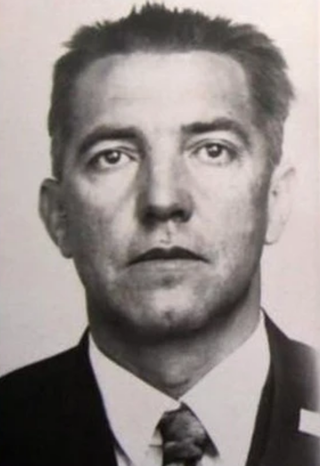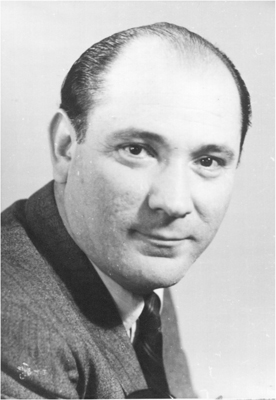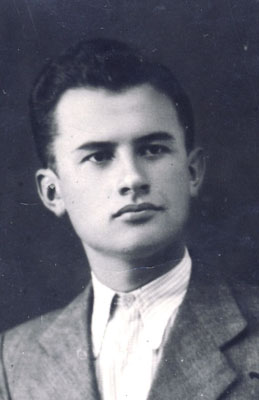Related Research Articles

The Romanian Communist Party was a communist party in Romania. The successor to the pro-Bolshevik wing of the Socialist Party of Romania, it gave an ideological endorsement to a communist revolution that would replace the social system of the Kingdom of Romania. After being outlawed in 1924, the PCR remained a minor and illegal grouping for much of the interwar period and submitted to direct Comintern control. During the 1920s and the 1930s, most of its activists were imprisoned or took refuge in the Soviet Union, which led to the creation of competing factions that sometimes came into open conflict. That did not prevent the party from participating in the political life of the country through various front organizations, most notably the Peasant Workers' Bloc. During the mid-1930s, due to the purges against the Iron Guard, the party was on the road to achieving power, but the dictatorship of king Carol II crushed this. In 1934–1936, PCR reformed itself in the mainland of Romania properly, with foreign observers predicting a possible communist takeover in Romania. The party emerged as a powerful actor on the Romanian political scene in August 1944, when it became involved in the royal coup that toppled the pro-Nazi government of Ion Antonescu. With support from Soviet occupational forces, the PCR pressured King Michael I into abdicating, and it established the Romanian People's Republic in December 1947.

Ana Pauker was a Romanian communist leader and served as the country's foreign minister in the late 1940s and early 1950s. Ana Pauker became the world's first female foreign minister when entering office in December 1947. She was also the unofficial leader of the Romanian Communist Party immediately after World War II.

Lucrețiu Pătrășcanu was a Romanian communist politician and leading member of the Communist Party of Romania (PCR), also noted for his activities as a lawyer, sociologist and economist. For a while, he was a professor at the University of Bucharest. Pătrășcanu rose to a government position before the end of World War II and, after having disagreed with Stalinist tenets on several occasions, eventually came into conflict with the Romanian Communist government of Gheorghe Gheorghiu-Dej. He became a political prisoner and was ultimately executed. Fourteen years after Pătrășcanu's death, Romania's new communist leader, Nicolae Ceaușescu, endorsed his rehabilitation as part of a change in policy.

Vasile Luca was an Austro-Hungarian-born Romanian and Soviet communist politician, a leading member of the Romanian Communist Party (PCR) from 1945 and until his imprisonment in the 1950s. Noted for his activities in the Ukrainian SSR in 1940–1941, he sided with Ana Pauker during World War II, and returned to Romania to serve as the minister of finance and one of the most recognizable leaders of the Communist regime. Luca's downfall, coming at the end of a conflict with Gheorghe Gheorghiu-Dej, signaled that of Pauker.
Vitali Holostenco or Holostenko was a Romanian and Soviet communist politician. He used several pseudonyms, among which were Barbu and Petrulescu.

Scarlat Callimachi or Calimachi was a Romanian journalist, essayist, futurist poet, trade unionist, and communist activist, a member of the Callimachi family of boyar and Phanariote lineage. He is not to be confused with his ancestor, hospodar Scarlat Callimachi.

Grigore Preoteasa was a Romanian communist activist, journalist and politician, who served as Communist Romania's Minister of Foreign Affairs between October 4, 1955, and the time of his death.
Alexandru Nicolschi was a Romanian communist activist, Soviet agent and officer, and Securitate chief under the Communist regime. Active until 1961, he was one of the most recognizable leaders of violent political repression.

Ștefan Foriș was a Hungarian and Romanian communist journalist who served as general secretary of the Romanian Communist Party between December 1940 and April 1944. Born a Transylvanian Csángó and an Austro-Hungarian subject, he saw action with the Hungarian Landwehr throughout World War I. While training in mathematics at Eötvös Loránd University, he affiliated with the Galileo Circle and, moving to the far-left, entered the Hungarian Communist Party in late 1918. During the brief existence of a Hungarian Soviet Republic, he joined the war against Romania (1919), but subsequently opted to settle in the Romanian Kingdom, at Brașov. Foriș emerged as a local leader of the Socialist Party, largely failing at convincing his subordinates to join the PCR upon its creation (1921). He took up underground work even before the PCR was formally outlawed, while establishing his public profile as an accountant and a correspondent for moderate left-wing newspapers—including Adevărul and Facla.

Gheorghe Pintilie was a Soviet and Romanian intelligence agent and political assassin, who served as first head of the Securitate (1948–1958). Born as a subject of the Russian Empire in Tiraspol, he was briefly employed as a manual laborer, and trained as a locksmith, before joining the Red Army cavalry and seeing action in the Russian Civil War. The NKVD shortlisted him for espionage missions in the 1920s, and in 1928 sent him on for such clandestine work in the Kingdom of Romania. Bodnarenko was apprehended there some nine years later, and sentenced to a twenty-years' imprisonment. While at Doftana, he became the ringleader of imprisoned Soviet spies, together with whom he joined the Romanian Communist Party (PCR). He expressed his loyalty toward Gheorghe Gheorghiu-Dej, the jailed communist and emerging factional leader; their tight political camaraderie lasted into the late 1950s.
Emil Calmanovici was a Romanian engineer, businessman, and communist militant. Known for the financial support he gave to the Romanian Communist Party (PCR) during the late 1930s and early 1940s, he became a political prisoner of the Communist regime after being implicated in the show trial of his collaborator Lucrețiu Pătrășcanu. Calmanovici died in mysterious circumstances in Aiud Prison, while on recovery from a hunger strike.

Teohari Georgescu was a Romanian statesman and a high-ranking member of the Romanian Communist Party.

Iosif Chișinevschi was a Romanian communist politician. The leading ideologue of the Romanian Communist Party (PCR) from 1944 to 1957, he served as head of its Agitprop Department from 1948 to 1952 and was in charge of propaganda and culture from 1952 to 1955. He has been described as "Moscow's right-hand man in Romania".
The Socialist Party of Romania was a Romanian socialist political party, created on December 11, 1918 by members of the Social Democratic Party of Romania (PSDR), after the latter emerged from clandestinity. Through its PSDR legacy, the PS maintained a close connection with the local labor movement and was symbolically linked to the first local socialist group, the Romanian Social-Democratic Workers' Party. Its creation coincided with the establishment of Greater Romania in the wake of World War I; after May 1919, it began a process of fusion with the social democratic groups of in the former territories of Austria-Hungary — the Social Democratic Parties of Transylvania, Banat and Bukovina. The parties adopted a common platform in October 1920. Progressively influenced by Leninism, the PS became divided between a maximalist majority supporting Bolshevik guidelines and a reformist-minded minority: the former affiliated with the Comintern as the Socialist-Communist Party in May 1921, while the minority eventually established a new Romanian Social Democratic Party.

Ion Vincze was a Romanian communist politician and diplomat. An activist of the Romanian Communist Party (PCR), he was married to Constanța Crăciun, herself a prominent member of the party.

Alexandru Drăghici was a Romanian communist activist and politician. He was Interior Minister in 1952 and from 1957 to 1965, and State Security Minister from 1952 to 1957. In these capacities, he exercised control over the Securitate secret police during a period of active repression against other Communist Party members, anti-communist resistance members and ordinary citizens.
Belu Zilber was a Romanian communist activist.
Serghei Nicolau was a Romanian communist espionage chief and a Securitate general.
Șmil Marcovici was a Romanian communist activist.

Petre Ion Gheorghe was a Bulgarian-born Romanian communist and anti-fascist resistance member, executed by Romania for espionage and treason. Having risen through the ranks of the Union of Communist Youth, he was the leader of the strongest communist resistance group during the first part of World War II in Romania.
References
- Stelian Tănase, Clienții lu' tanti varvara: istorii clandestine. Humanitas, Bucharest, 2005, ISBN 973-50-0878-5